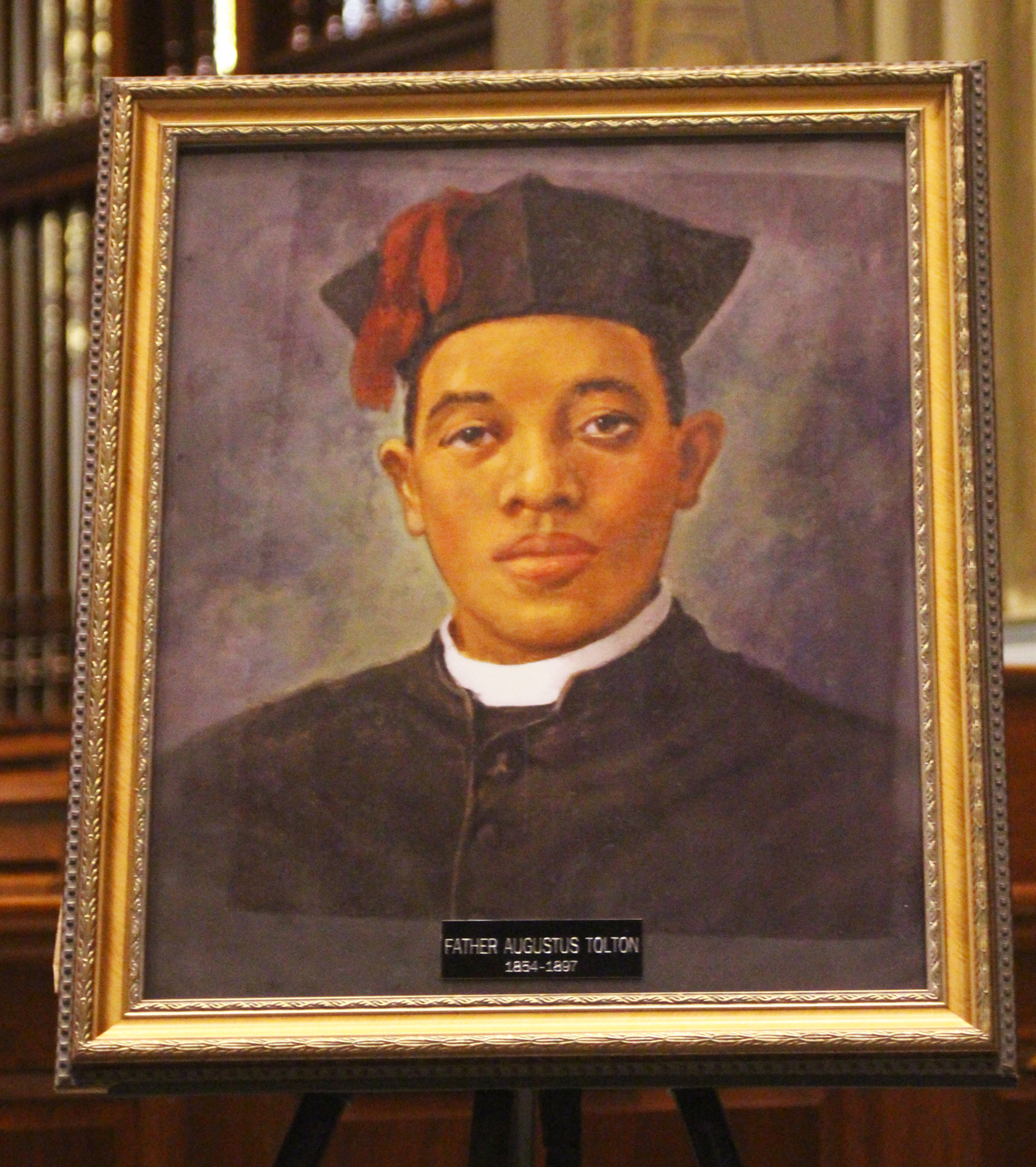
A portrait of Venerable Augustus Tolton, the first recognized African-American Roman Catholic priest, is now on display at the Cathedral Basilica of SS. Peter and Paul near the tomb of St. Katharine Drexel, who provided support for his pastoral mission in Chicago. (Gina Christian)
A portrait of a pioneering Black priest and saint in the making has recently been installed in the Cathedral Basilica of SS. Peter and Paul, next to the saint who assisted him in his earthly mission.
Last month, Cathedral rector Father Dennis Gill announced that an image of Venerable Augustus Tolton would be placed near the tomb of St. Katharine Drexel, which is adjacent to the Drexel family altar. The news came during a June 26 Mass celebrated by Archbishop Nelson Pérez in honor of Father Tolton, the first widely recognized Black Roman Catholic priest in the United States.
The Philadelphia chapter of the Tolton Ambassadors, a national network dedicated to advancing the priest’s canonization cause, donated the framed picture, a painted replica of one of Father Tolton’s clerical photographs.
Tolton Ambassador Madeline Tymes said she and the other group members were “very honored and surprised that Father Gill wanted Father Tolton’s picture to be on the altar with St. Katharine Drexel.”
The portrait’s installation underscores the connection between Drexel and Tolton, who were contemporaries – though from vastly different backgrounds.
While Philadelphia native Drexel was reared in luxury, Tolton was born into slavery in 1854. He was raised as a Catholic, the faith held by the Missouri-based families who had purchased his parents.
In 1862, Tolton’s father escaped to serve the Union Army during the Civil War, but soon died of illness. His mother thereafter fled with young Augustus and his two siblings, rowing them across the Mississippi River and eventually reaching Quincy, Illinois, where they settled.
After working in a factory and attending Catholic schools (often facing harassment in the process), Tolton discerned a religious vocation. He moved to Rome in 1880 to study for the priesthood, since no seminary in the United States would accept him due to his race.
[hotblock]
Upon his 1886 ordination, Tolton expected to be assigned to pastoral work in Africa, but was instead sent back to the United States, first to Quincy and then later Chicago. Despite repeated rejection, he persisted in his pastoral work, founding St. Monica Parish on Chicago’s South Side. His reverence, humility, zeal and exceptional singing voice drew both Black and white Catholics from all economic classes.
Then-Mother Katharine Drexel, who dedicated herself to the evangelization of the Black and Indigenous populations, provided financial support for the establishment of St. Monica.
While Drexel lived until 1955, Tolton’s poverty, combined with his strenuous schedule, likely hastened his untimely death from heat stroke and uremia in 1897.
“Father Tolton lived the Gospel in all that he did for the love of God,” said Tymes, adding that the portrait’s new home in the Cathedral “recognizes and enhances” Tolton’s “life of faith, perseverance and good will.”
The portrait will remind Cathedral pilgrims to invoke Father Tolton’s intercession – and will help advance his cause for canonization, said Tymes.
“What we hope will be accomplished is that Father Tolton will become a saint,” she said.
PREVIOUS: Hymn writer says little-known Marian apparition has a message for today
NEXT: Grandkids (and great-grandkids) bring ‘blessings beyond measure,’ say area seniors



Share this story